I
The waitress, blond, smiling, set down a glass of Grimsberger Rouge as chatter from within the glass-bound café sailed to where I sat on the pavement, waiting for Claudia, my friend and longsuffering tour guide. She was within looking for a board game.
I forget the name of the café. But it could have been anything. A café in Paris by any name is a café in Paris. I checked the time—out of habit since, as it appeared to this Nigerian, no one in Paris is in a hurry. 8:30 p.m., yet bright and clear. Raised in Nigeria, much too close to the equator, where afternoon and night are distinct, I figured this is partly why Paris is the city of light.
It was, however, the search for a different light that brought me to Paris, the kind that leads writers to Europe in search of some illumination. Years have passed since my first encounter with the Ernest Hemingway Paris memoir A Moveable Feast at the University of Benin but that book, directly, led to my Paris visit. I had first met the author in the second edition of The Paris Review Interviews, a collection of writer-interrogations by the famous literary magazine. Something stirred: between his responses in the latter and his sentences in the former, the teenage student of pharmacy that I was had become hooked. I was unaware then, but at the time of reading Feast, two things had become inevitable: Writing was a part of my future, and I’d have to see Paris.
Sitting at a Parisian café and filling a notepad, a literary tradition that’s also a cliché, the teenager-that-is-no-longer had achieved a combined consummation.
Claudia came out bearing a game. I read its name. Timeline.
“By the way, do you like the beer?” she asked.
The red beer Grimsberger Rouge is not great, but as I’ll come to learn, is better than the atrocious French liqueur pastis. I nodded to Claudia and tried to recall other famous literary people that lived in this city: Scott Fitzgerald, Zelda Fitzgerald, Gertrude Stein. (Owen Wilson, I thought briefly. But that was Woody Allen’s Midnight in Paris doing me in. Like Wilson’s writer character in that film my thoughts of Paris are really about those people. And what Allen understood is that for a certain kind of reader, visiting Paris is a lot like entering Stein’s salon.)
James Baldwin came in later, but his stay in a Swiss village is of higher literary interest. There were others, many others, Richard Wright and George Orwell among them, but they never became important as those four are to me.
Not all four even; three really. Ernest and Scott and Zelda. Their lives have become as important as their writing. Maybe even more. Hemingway, as someone noted, was the first writer who was also a brand. A journalist for a long time, he knew how to work the media. Today, he may not have taken to Twitter, but he’d be on a YouTube channel weekly. It was he who whispered writing as a way of life into my ears—to the eternal consternation of my folks.
Like everyone else, I went through the Hadley Chase phase, got deep into Stephen King, read some Dean Koontz, some Ekwensi, lots of Grisham. I read my Achebes, some Soyinka, the Booker-winning Okri, yet it wasn’t until Hemingway that writing seemed possible. He would become the first figure in my pantheon of dead white men—as a British friend once put it to me, with an eye-roll. His life, boisterous thing that it was, appealed to that teenager.
What reason can I find for this now? How did it happen that someone far away and long dead became that important? We don’t choose our ancestors. Innocent about race at the time, I embraced this white man. And it was only years later the color of my first real literary hero would be pointed out to me. For a long time, what mattered was the writing. The pupil was ready, and the teacher walked in.
Years later, I’ll discover that I was not alone in thinking highly of that The Paris Review exchange. The great Colombian writer Gabriel Garcia Marquez called it a “historic interview,” noting that: “I don’t think that any more useful advice has ever been given about writing.”
There was also the branding: it is the fate of a writer as celebrated as Hemingway that more stories are consumed about the man than by the man. And even so, he hasn’t achieved universal admiration.
Item 1: Famous Nigerian Writer (conversation): “I prefer Faulkner. When I read Hemingway I knew there was nothing underneath.”
Item 2: Martha Gellhorn, former wife (interview): “He had to marry his women to have sex.”
Item 3: James Wolcott (essay): “Blasted Hemingway!—he was always his own worst enemy, right up to the bloody end.”
*
As Claudia and I played Timeline, a game involving guessing the years of invention of varied items, we learned that the corkscrew and the pencil were invented in the same year.
“What would writing be without the corkscrew?” she asked, playing with the famed writer-bottle relationship.
“We’ll just drink beer,” I said.
The waitress returned, this time bearing a meal.
“Steak tartare,” Claudia said. “Raw meat and potatoes.”
Having lived in Nigeria awhile, she knew how my country liked its meats well done. But she ordered this so that I could have a taste of Europe. Not every time pounded yam. As response, I withdrew my camera from its case.
“You want to take a picture—Why?”
“Raw meat, Claudia,” I replied. “I’m memorializing my death.”
II
I had come to Paris from Berlin. Hip, welcoming Berlin. Berlin, the angular and unpretentious—where, once, wearing a cream hugging sweatshirt to a club, I felt like a peacock in a manger. I’ll barely get in with the same outfit in an Abuja club or one of the upmarket ones in Lagos.
Berlin, as I came to see, is hipster-paradise. And Paris is a pretty and expensive city. But beauty deserves its price. And the city, like a certain kind of belle, is ready for photos, its pouting splendor fixed, passing elegance to every camera shot and competence to the photographer. Nobody takes a bad picture in Paris. And everyone is a kind of artist. There are innumerable low-rent artists by the Seine and elsewhere offering to sketch your likeness for a few euros. The city also breeds the elemental artist, the kind not bothered by the need to make a few bucks. Like my Bulgarian friend’s kid.
Both mother and son live in Paris, where she runs a website on film criticism. Months before my visit to Paris, we met at the Rotterdam film festival in the Netherlands. She was with her boy on the day, and he made such a fuss that we could hardly talk. Having seen from too many foreign flicks the relaxed manner in which westerners handled kids, I watched to see how the scene would play out.
It was too easy. She handed the kid a piece of paper and pen. Almost immediately, the boy stopped shouting and began to scribble.
“An artist,” I laughed.
Came the response, ‘That’s how they make them in Paris.”
III
The Louvre, the Arc de Triomphé, the Eiffel Towel—I had to see the popular sights. But first, Hemingway’s haunts.
Initial inquiries revealed that Oga Ernest attended only expensive spots. A certain cafe with his name posted somewhere within allows only dudes with suits. As I was in Europe for a pop culture festival, I had no such thing in my luggage.
But surely, there had to be an accessible place? Wasn’t this the man who romanticized poverty in A Moveable Feast? I could have been disappointed to learn of his duplicity. (And Claudia expected my disappointment, informing me of Hemingway’s preference with a smirk. Originally from Montpellier, she needed to believe that she wasn’t haughty and fancy—as other French citizens perceive Parisians.) But then I knew that the man trafficked in difference: Macho stories but sentimental within; clean, spare sentences but a cluttered existence. As the aforementioned critic James Wolcott put it, “Literary scholarship has peeled away Hemingway’s hearty bluster to reveal an androgynous side hidden under his safari jacket….” For many writers the lived life is different from what’s on the page; and only the naïve would be shocked.
Claudia, who didn’t care for Hemingway—she’s French, and they have their own long list of literary men—later found a more accessible altar at the Rue du Cardinal Lemoine. But before we went to that altar, I saw the Notre Dame cathedral, where piety and ancient beauty entwined and inside its walls a spiritual life seemed within reach. I walked by the Seine, where I saw an old lady sunbathing, unperturbed by cameras or life. The excellent Berthillon ice cream touched my lips. I spent hours at the famous Shakespeare and Company. And before the end of my stay, I had seen the Arc de Triomphe, which is both less famous and more beautiful than the Eiffel.
The Eiffel, however, is imposing. And before heading to it, I sat and waited a while—as one might collect oneself before approaching a woman more mysterious than beautiful. Breathe in, breathe out. Familiar as the Eiffel Tower is from countless movies and commercials, once there and looking up at its wide-legged majesty I found more familiarities. Names in gold on the body of the tower—Le Chatelier, Gay-Lussac, Becquerel—were figures from my long science schooling. These men, immortalized in my textbooks, had received their due from a country that recognized and celebrated genius.
If that sentence reads like it’s directed at my country, it is. On the one hand, it is difficult to walk around Europe and see streets, monuments, named after great men and women of science and the arts and avoid pangs of jealousy on the realization that similar spectacles of respect would never be paid by your country. On the other, it is very nearly impossible to take in the beauty of Europe and not consider, through history, how much the beauty here and the lack elsewhere are related. I held the first hand as I looked up at the Eiffel.
Soyinka, Nigeria’s contender for Greatest Writer Ever, was alive and reaping the benefits of his genius by living so long. What will happen when he departs as we all must? Beyond the books, what was there for Achebe, the country’s other contender for the position? As a writer, I want to believe the books are enough, that the art is sufficient. As a fan and reader, I think there should be more. And before me was proof that nations should honor their best.
I was proof myself: if the output was enough, what was I doing in Paris in pursuit of Hemingway?
IV
At the Rue du Cardinal Lemoine, Claudia took me to a street corner. There, on a building, hung a plaque with a quote of Hemingway taken from the same memoir I bought at the university.
Back in school, I believed that the book’s definitive line was the one that formed its epigram and gave the book its title: “If you are lucky enough to have lived in Paris as a young man, then wherever you go for the rest of your life, it stays with you, for Paris is a moveable feast.”
But the French are different from you and me. It was the book’s last line that made it to the plaque:
“But this is how Paris was in the early days when we were very poor and very happy.”
Hemingway lived in the area, and here was a reminder. (Months later, A Moveable Feast became a reminder of the Paris life after the city was struck by terrorists; its sales increased as the city tried to return to normal.) In fact, I was standing before the very house where a young Hemingway and his first wife, Hadley, lived when they arrived Paris.
Before me was a slice of literary history. Also before me was a rolled-up rug perched just under the sign. It looked like the sort of thing a homeless person may unfurl for the night. I had a thought: if a man went to bed on that rug, smiling in contentment before sleeping, wouldn’t he have transformed the words above his head to prophecy?
I should have shared this with Claudia. Instead I made some remark about how important Hemingway is to France. She bristled, and we got into an argument about the American writer and the French city.
She was still debating Hemingway’s relative unimportance when a few passers-by looked up and seeing the wooden plaque called out his name in recognition. A few may have taken pictures, looking pleased. I was pleased myself.
“This is Paris,” Claudia said wanly, stubbornly. “People read. Of course they’ve read him.”
I dropped the argument, put my camera in her hands, and posed under the plaque.
Postscript
Weeks later, back in Lagos, I scanned the photos. In one, I’m smiling sheepishly; in another I have my hat off in phony obeisance. I’m bowing in yet another. All of the photos have shots of the plaque overhead. All of the photos are kitsch. Feeling a little embarrassed, I looked away.
And then I tried again. This time I saw happiness. The awkward and sincere delight of a pupil glad to be in the presence of his very first teacher.
***********
Post images by Oris Aigbokhaevbolo
About the Author:
 Oris Aigbokhaevbolo, writer and film critic, has appeared in Chimurenga, This is Africa, The Africa Report, and the Guardian UK. His music writing received the 2015 All Africa Music Awards’ prize for Best Music/Entertainment Journalism. He lives in Lagos and tweets from @catchoris.
Oris Aigbokhaevbolo, writer and film critic, has appeared in Chimurenga, This is Africa, The Africa Report, and the Guardian UK. His music writing received the 2015 All Africa Music Awards’ prize for Best Music/Entertainment Journalism. He lives in Lagos and tweets from @catchoris.


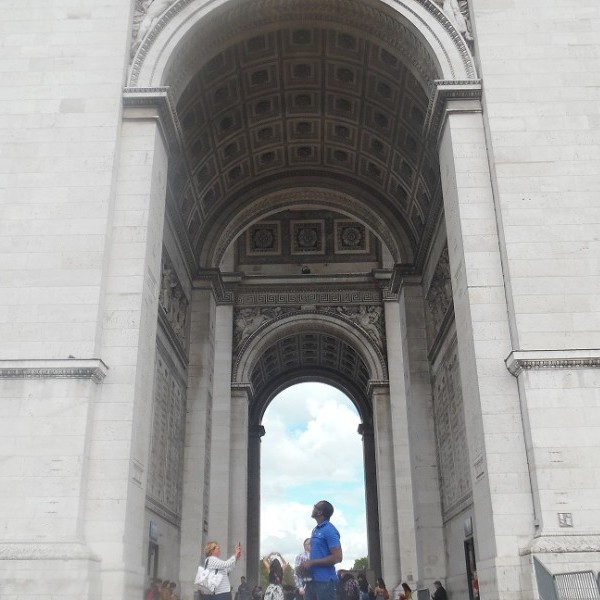
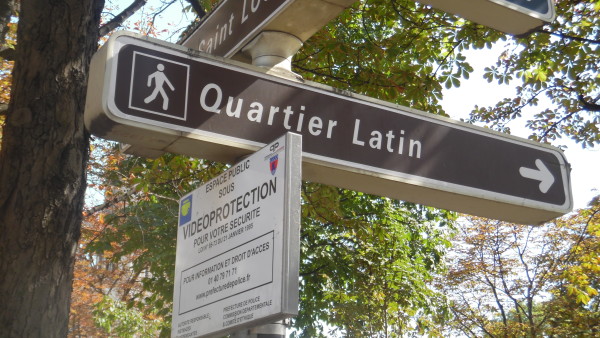
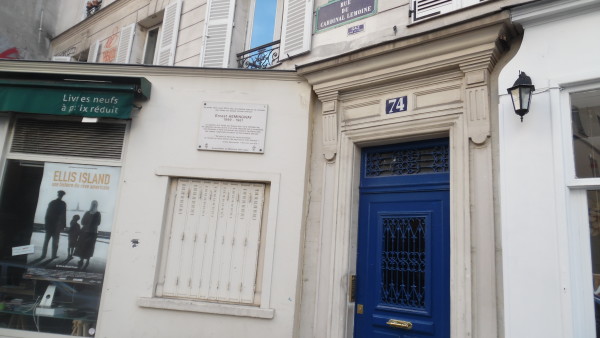
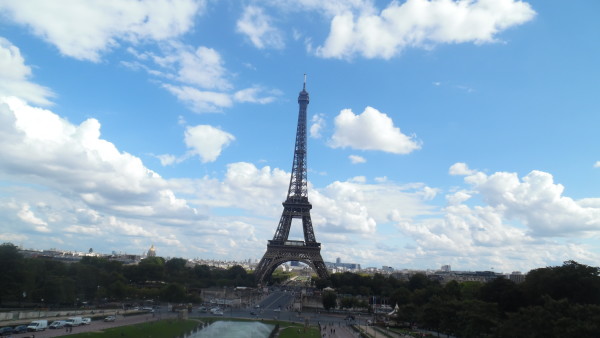
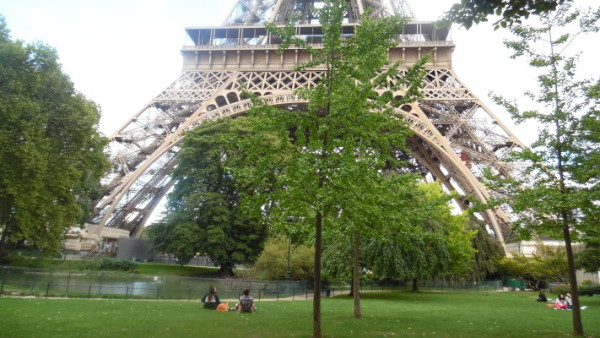
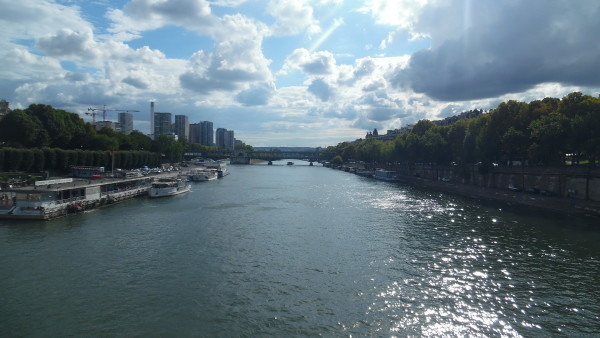
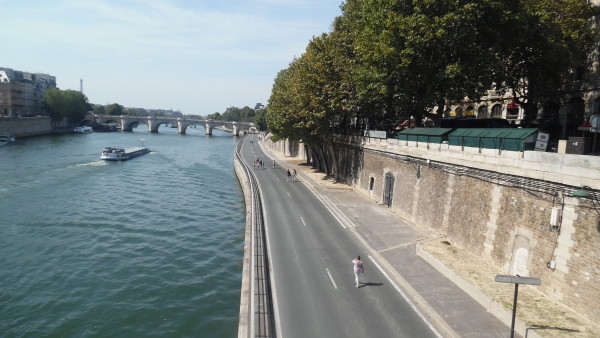
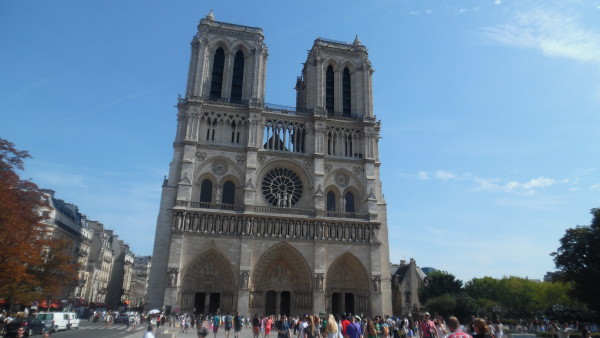
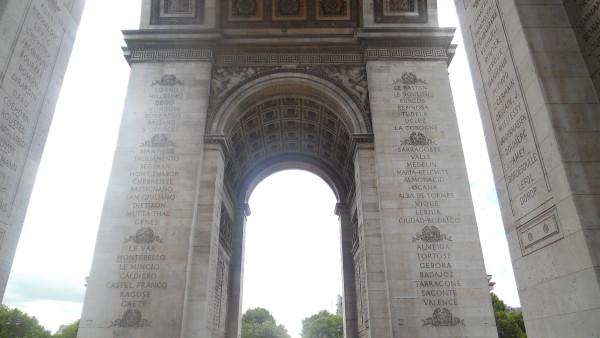
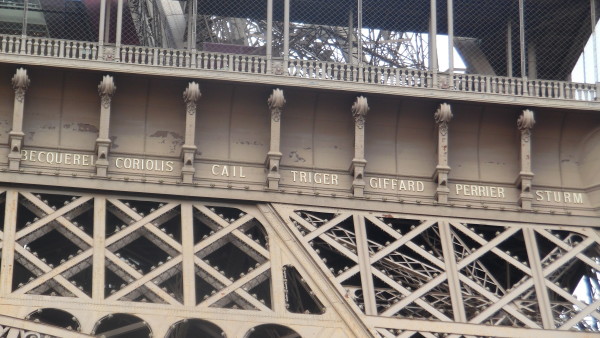
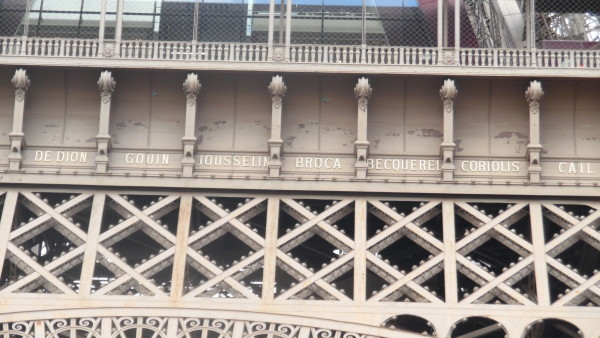
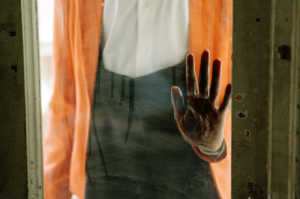
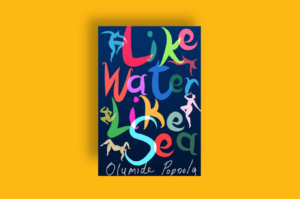

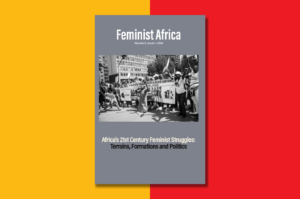

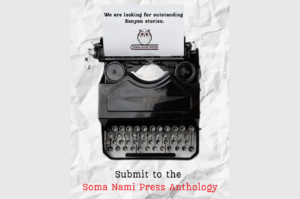

Things Kan Only Get Better for Toni Kan at 50 - Oris Aigbokhaevbolo - The Lagos Review June 12, 2021 20:57
[…] young, one measured his talent against the others. I was deep in my Hemingway phase and as you know, Papa was competitive. I am sure others weighed my skill on the page. I did the same and found that the more popular […]